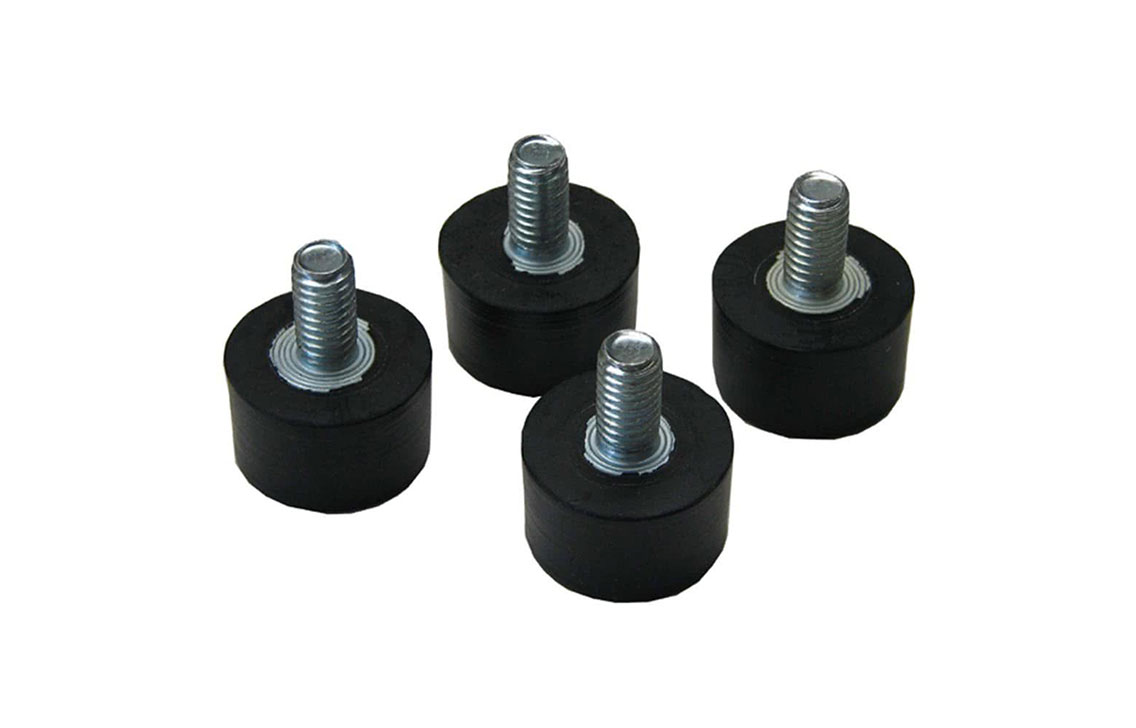
Rubber Mounting
Rubber mounting, often referred to as rubber mounts or rubber isolators, is a type of vibration isolation and shock absorption technique that uses rubber or elastomeric materials to dampen and isolate vibrations, shocks, and noise.
Rubber mountings are commonly used in a variety of industrial and mechanical applications to prevent vibrations or shocks from being transmitted from one component to another. Here are some key features and common applications of rubber mounting:
Key Features:
Elastomeric Material: Rubber mountings are made from elastomeric materials, such as natural rubber, synthetic rubber (e.g., neoprene, EPDM, silicone), or thermoplastic elastomers (TPE), which provide flexibility and resilience.
Vibration Isolation: Rubber mountings are designed to absorb and isolate vibrations and shocks, preventing them from propagating to other components or structures.
Shock Absorption: These mountings are effective in reducing the impact of sudden shocks or impacts, safeguarding sensitive equipment and structures.
Noise Reduction: Rubber mountings can help reduce noise levels by isolating vibrations that contribute to noise generation.
Stability: They can provide stability and minimize movement in various applications, ensuring that machinery or equipment remains in place during operation.
Customizable: Rubber mountings come in various shapes and sizes and can be customized to fit the specific requirements of an application.
Applications:
Automotive Industry: Rubber mountings are used in vehicles for engine mounts, transmission mounts, suspension mounts, and other applications to reduce vibrations and noise.
Industrial Machinery: In industrial equipment and machinery, they provide vibration isolation for heavy machinery and precision equipment, reducing wear and tear.
Construction Equipment: Rubber mountings are employed in construction machinery, such as excavators and bulldozers, to absorb shocks and reduce operator fatigue.
HVAC Systems: In heating, ventilation, and air conditioning systems, they are used to reduce noise and vibrations in equipment like compressors and air handlers.
Electronics: In electronic devices and equipment, they help isolate vibrations and prevent damage or interference with sensitive components.
Marine Applications: Rubber mountings are used in ships and boats for engine mounts and other applications to dampen vibrations and reduce noise.
Power Generation: In power plants, they are used to isolate generators, engines, and other machinery to prevent vibrations from affecting structural integrity.
Aerospace: In aircraft, rubber mountings are used in engines and other critical components to absorb vibrations and ensure smooth operation.
Renewable Energy: In wind turbines and solar panels to reduce vibrations and noise and protect structural components.
Medical Devices: In medical equipment and devices to minimize vibrations that can affect sensitive instruments and procedures.
Residential and Commercial Buildings: They are used in building structures and HVAC systems to reduce vibrations and noise transmission.
Rubber mountings play a crucial role in reducing wear and tear on machinery, protecting sensitive equipment, and improving the comfort and safety of both operators and structures. The selection of the appropriate rubber mounting depends on factors like the type of vibrations or shocks, load-bearing capacity, environmental conditions, and the specific application requirements. Proper installation and regular maintenance are important to ensure the effectiveness and longevity of rubber mountings.
